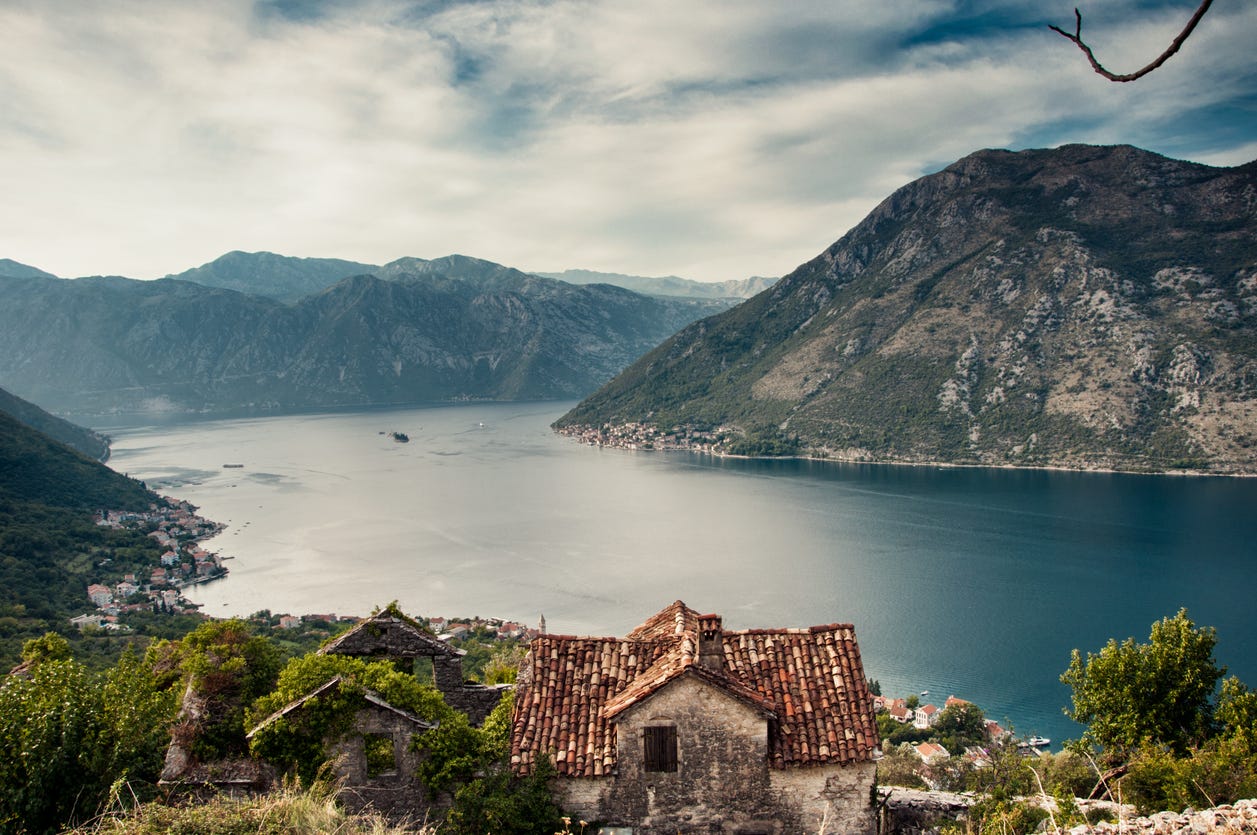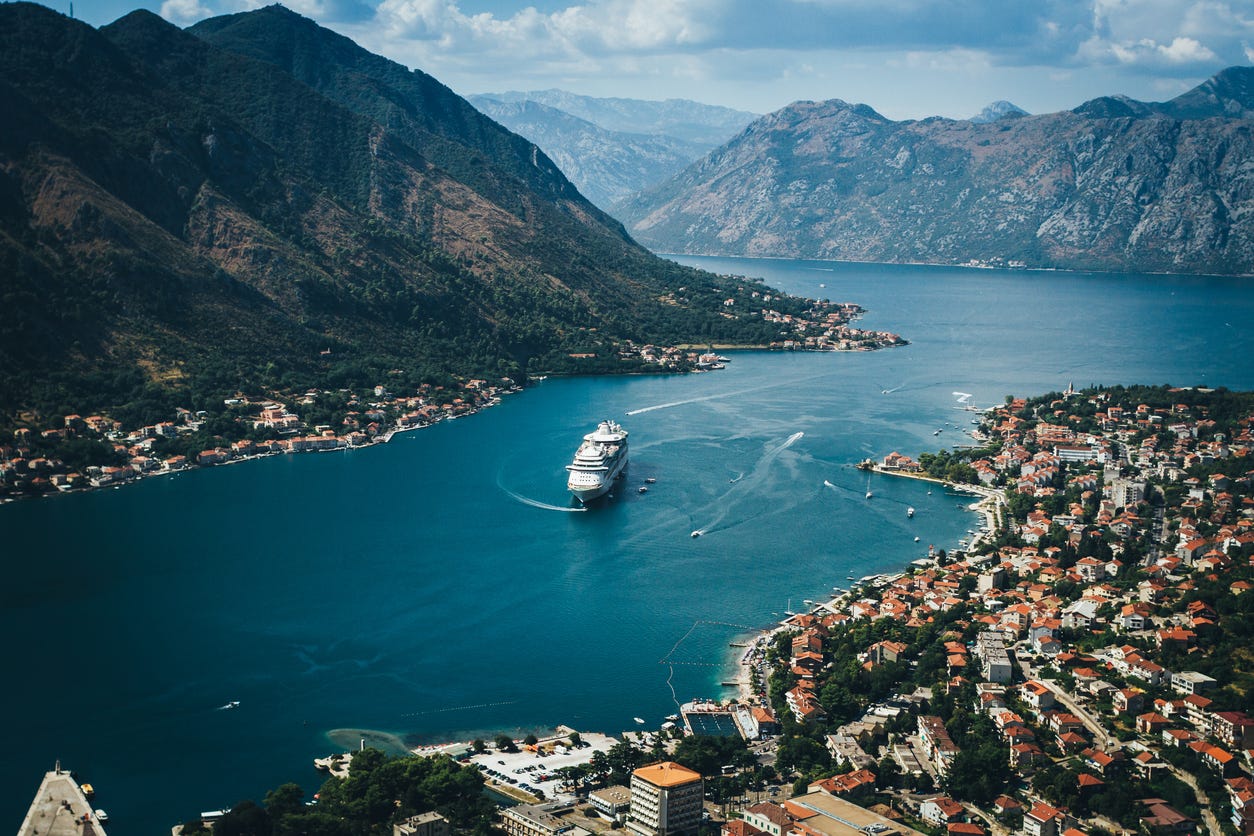Off-Road to Montenegro’s "Stone Village"
Discovering Kotor’s mountain secrets on a journey through Montenegro’s Boka Bay.

Nothing had prepared us for Montenegro.
As our cruise ship slid through the narrow straits of Boka Bay, mountains soared high above the water, dotted with wooden fishermen’s boats and rocky, church-topped islands.
The walled, moated, millennia-old city of Kotor lay at the base of those mountains. After deboarding, I half expected a galloping medieval knight to emerge from among the stone arches. Instead, my family and I met our guide for the day, Dennis.
For €85 each, we’d be taken in a 4×4 to visit the stone village of Gornji Stoliv to sample some local Montenegrin foods. The tour included a 20-minute “off road” adventure—a bit gimmicky, I thought, but then again, we were on a cruise. We’d embraced gimmicky a long time ago.
Only one road led in and out of the walled city—and we were soon on that road, leaving our ship far behind. Dennis hugged the shoulder as we passed a smattering of fisherman’s enclaves and thatched-patio restaurants overlooking Boka Bay, then made a sharp left turn into what looked like the alleyway between two stone homes.
The Pathfinder ground to a halt here. Mud splattered from the tires as we barreled from the alleyway into a forest, engine roaring as we tackled vertical slopes. Clutching the handrails, I glanced back at my husband and daughter, who were bobbing up and down like a pair of marionettes.
“This is the road leading to the village,” said Dennis.
Road? A very generous definition. More like a collection of cliff-hanging switchbacks and nail-biting curves. There were no tourist traps or gimmicks here.
Dennis explained that, at one point, the village of Gornji Stoliv counted around 1,200 residents—until 1979, when a devastating earthquake toppled many of the homes and forced villagers to move. Most stayed away. Although a local organization was invested in the revitalization of the village, the current population was… a mere four residents.

We emerged from the Pathfinder to find ourselves bathed in natural splendor. A thick grove of chestnut trees spread out before us, intermingled with stone homes topped with terracotta roofs and laced with camellia flowers. A relatively rare plant, camellia was brought by seed-baring seafarers from Japan at the end of the 18th century, and the flowers remain one of the key symbols of the village.
Ducking under a trio of olive trees, our small group skirted along a delicate stone path to the pièce de résistance of Gornji Stoliv: a heart-stopping view of Boka Bay from an altitude of nearly 790 feet. Our ship in the distance was dwarfed by the lush, towering mountains.
Enveloped in total silence, save for a few chirping birds and the subtle clank clank of two cow bells that resonated throughout the valley—their owners rested casually under the shady trees below us—it was a lost-in-time moment.
Dennis led us to the parish church of St. Elijah, the other standout attraction of the village. Built between the 15th and 16th centuries, with a bell tower that still strikes the hour, the church is famed for three altarpieces by the Slovenian artist Josipa Tominc.
As we tracked back to a large stone home at the entrance to Gornji Stoliv, Dennis explained the origins of the name Stoliv. “It means one hundred olive trees,” he said. “In Montenegrin, sto oliva.”
As the legend goes, every man in Gornji Stoliv had to plant one hundred olive trees in order to marry. The trees proved the man’s wealth to the townsfolk in Kotor, who were wary of sending their daughters to the mystical village on the mountain.
Stanko, Gornji Stoliv’s unofficial statesman, greeted us outside his home… which also serves as the village’s lone café. Along a large wooden terrace with two picnic tables overlooking the sea, we drank Montenegrin beer and tasted herb-covered olives, cured ham, and thick slabs of brie-like cheese—all produced by Stanko himself.
While watching the sailboats leave sleek wakes around the rock islands of Boka Bay, my family fell in love with the charms of Kotor and its “lost” stone village. Book your own trip here.
Editor’s Note: This story first appeared in the latest issue of International Living magazine. Every month, we share inspiring travel tales, expat insights, and practical guidance on living overseas. If you’d like more stories like this delivered straight to you, consider subscribing to International Living today.


